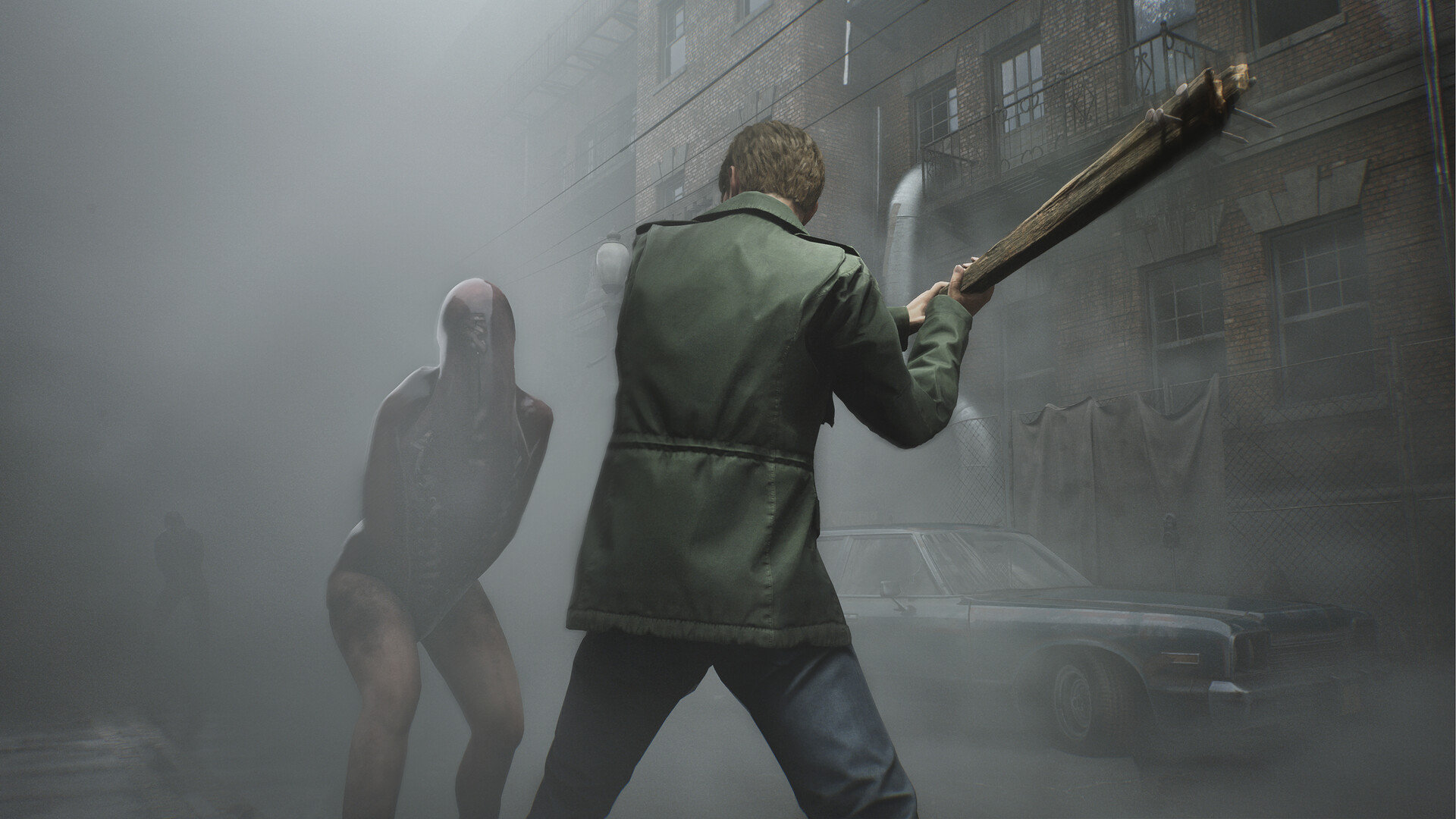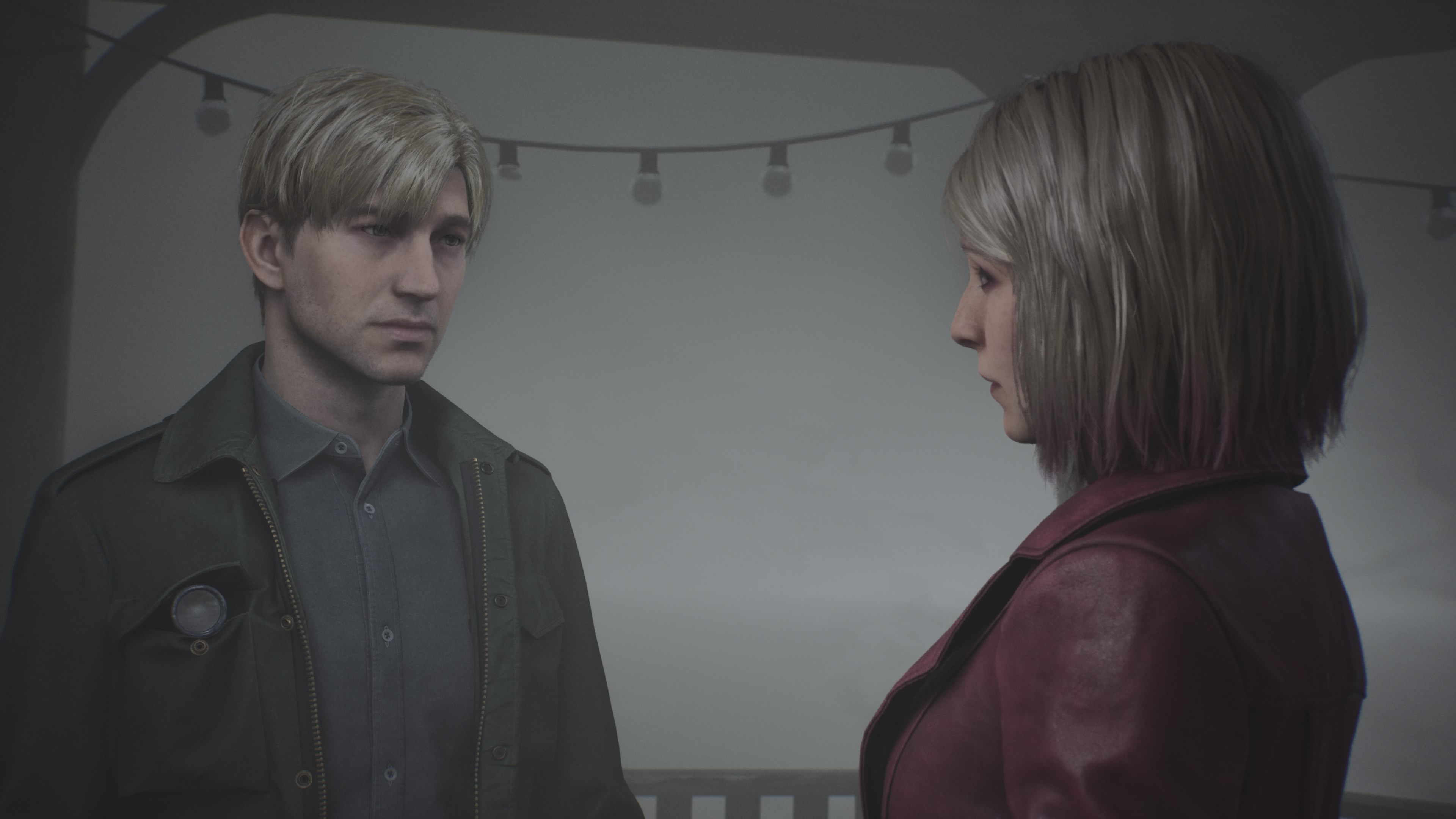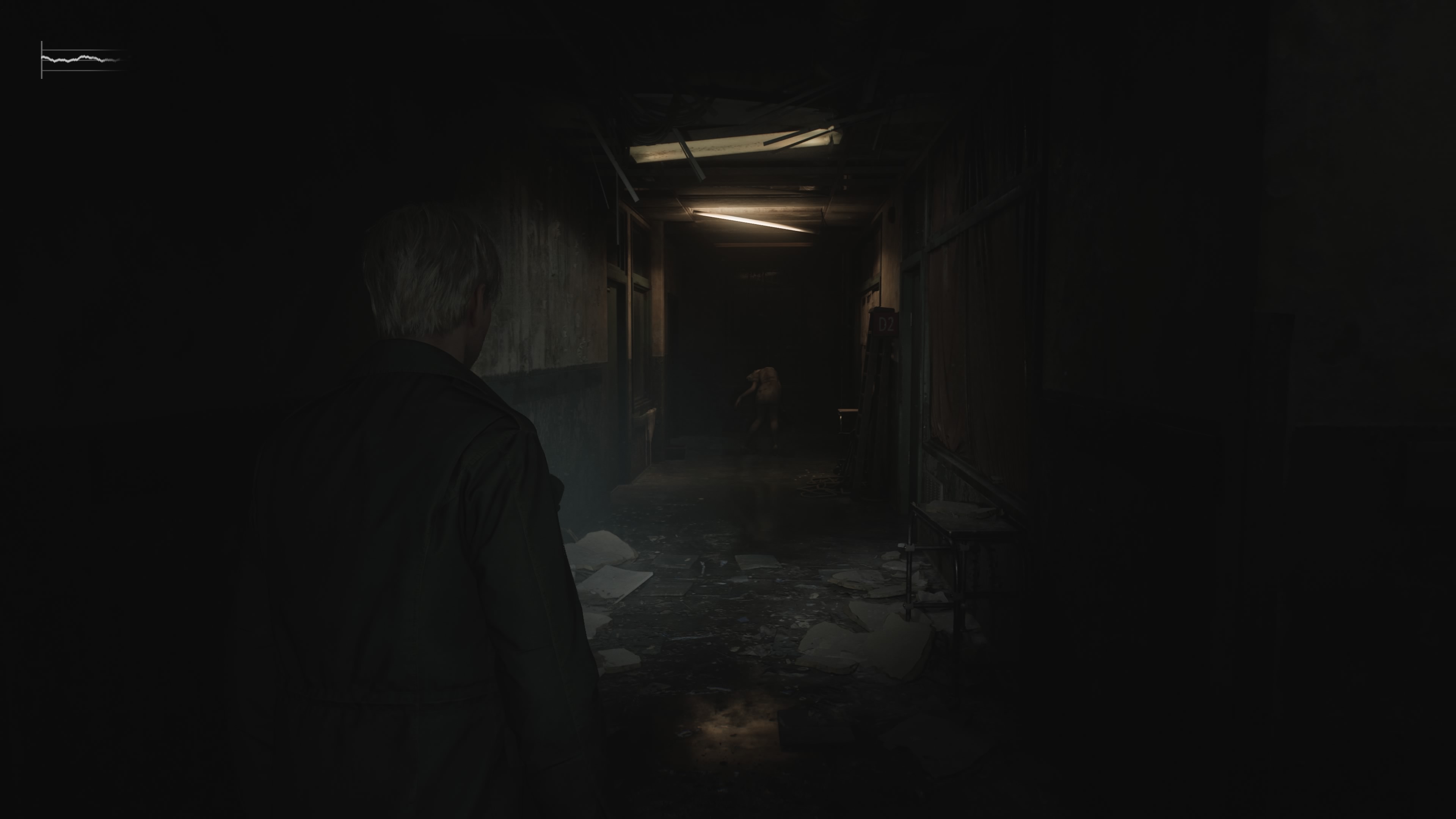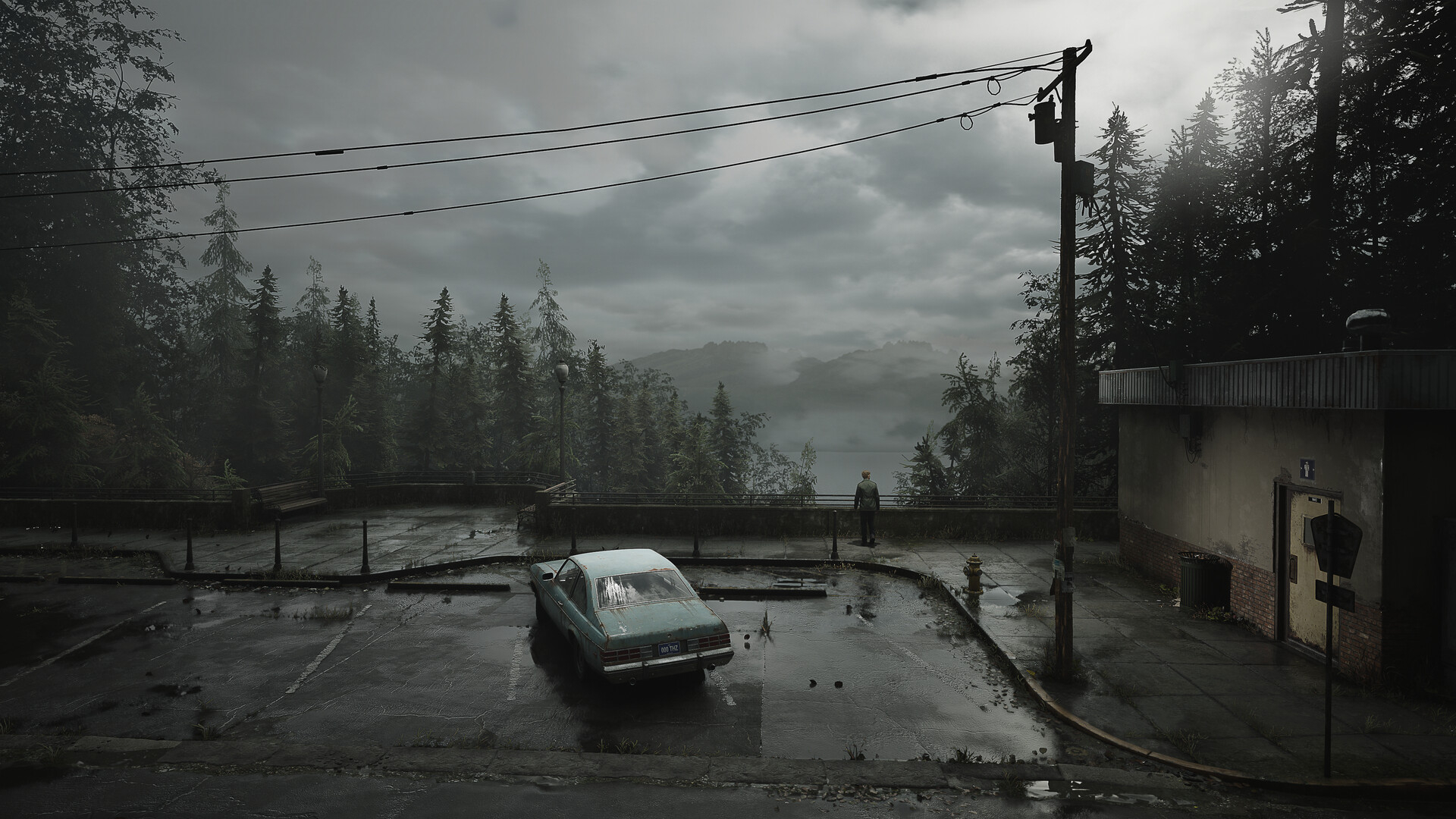Silent Hill 2 review: a stylish remake, but not definitive (original) (raw)
TechRadar Verdict
Remaking Silent Hill 2 is no small task, and while I didn’t gel with all the changes Bloober Team made, there is still a lot to enjoy in this new edition. Carefully acted cutscenes from its small but talented cast do well to capture the ambiance of the original game, and the fresh coat of high-definition paint looks modern without sacrificing the eerie atmosphere. Unfortunately, shifting to a fluid third-person perspective means the classic combat feels clunky and torn between homage and modern visual standards. Questionable changes to a handful of scenes and key battles also detract from the subtlety wielded by the source material and introduce unnecessary padding that harms its pacing.
Pros
- Carefully recreated locations and inclement weather create an unnerving ambiance
- Well-acted cutscenes amp up the drama and set a compelling tone
- Puzzles throughout feel well-curated and challenging
Cons
- -
Changes to certain encounters throughout the story feel unnecessary and harm the pacing - -
Clunky combat doesn’t work with a new camera angle, making for frustrating fights
Why you can trust TechRadar We spend hours testing every product or service we review, so you can be sure you’re buying the best. Find out more about how we test.
Review info
Platform reviewed: PlayStation 5
Available on: PS5 and PC
Release date: October 8, 2024
It’s been years since I first played the horror game Silent Hill 2, and yet, in my restless dreams, I see that town. The liminal streets, chunky grotesque monsters, and cursed bric-a-brac have all taken up residency in my head, and with so much history, I’ll be the first to admit I was skeptical at the thought of a remake.
For those unfamiliar with the beloved original, Silent Hill 2 centers around a grieving James Sunderland who receives a letter from his deceased wife, Mary, beckoning him to the eponymous Silent Hill. Bewildered at the letter, James heads into the town, looking for any signs of his spouse. A small cast of tormented souls ferry James through his journey, and through a series of cryptic conversations and a smattering of environmental clues, the truth of the town and James’ past slowly comes into focus.
My time with developer Bloober Team’s Silent Hill 2 remake began with James wandering towards the local graveyard, and I was immediately struck by how stark but strangely alluring the world felt. In the way New York is a character in Friends, so is the fog in Silent Hill 2, and I was relieved to see how disorienting it still was to navigate its streets, apartment buildings, and prison complexes.
While there isn’t quite as much Comic Sans font used here as in the original, the unmistakable ambiance is much the same, permeating through the dilapidated buildings and the eerie soundscape. As James, you’ll explore the town, one area at a time, finding maps, solving think-y puzzles, and defending yourself against grotesque creatures with household items and firearms as you inch closer to finding your wife.
Soured flesh

(Image credit: Team Bloober/Konami)
Fleshy and wet, the vaguely human-shaped intruders wield freaky movement and body horror aesthetics to significant effect, and this combination frequently caught me off guard. Notably, the way the mannequins lurk dormant under tables and behind doors just out of view was a source of constant terror (and delight). Despite the small pool of enemy variants throughout the game, their reactive scuttering and slithering garnered more than a few screams throughout.
This sense of appropriate discomfort extends throughout the game, with the Brookhaven Hospital (and its nightmare mirror realm) being a particular stand out, managing to blend the sterility of medical spaces with the moldy stagnation of abandoned buildings. It’s clear that care has been taken to fine-tune the details throughout, with so many unsightly stains and muck coating the otherworld.
One major deviation from the original game is the shift from a fixed perspective to an over-the-shoulder one, akin to Capcom’s Resident Evil remakes. Unfortunately, this active camera approach dulls the anxiety and claustrophobia that come naturally with the old CCTV-esque viewpoint. It’s safe to say that James Sunderland is not Leon Kennedy, nor is he supposed to be, and as a result, this change doesn’t quite meld with the more plot-centric storytelling that makes Silent Hill 2 so engaging. Eventually, I became steeled to the fight and started entering rooms with the rugged bravado of an action hero, which meant I wasn’t feeling so immersed in James’ fragile, vulnerable characterization.
It’s not all blood and guts, though, as an array of puzzles constantly interrupt your search and the creature encounters it brings. Ranging from bite-sized to full-on head-scratchers, the problems carefully walk the line between frustrating and rewarding. The Brookhaven Hospital section featured one of my favorites. It involved embodying a morbid Sherlock Holmes, investigating patients, and solving riddles related to their tragic end for the prize of a medical wristband, whose numbers had to be aligned carefully to access the next area. For those who've played the original game, the puzzles are primarily faithful but have been updated and tweaked slightly, so you shouldn’t be able to barrel through.
Messing with The Order

(Image credit: Team Bloober/Konami)
Storytelling changes from the original don’t feel quite as successful or necessary for a remake, though, and ultimately harm the pacing and subtlety of _Silent Hill 2_’s complex psychological themes. The addition of new areas, scenes, and extended boss fights are hit and miss throughout, with some augmenting the ambience and others detracting from the delicate subtext surrounding James’ desperate search for Mary. This is felt most in the Abstract Daddy encounter that centres around the character Angela’s traumatic backstory. In the original, it all takes place in one claustrophobic room, whereas in the remake, it manifests as a much longer, multi-stage chase-based boss fight, which dulled the circumstances surrounding the battle.
Elsewhere, I can’t help but feel that the remake loses something by stripping out the ability to interact with random clutter in the environment to read James’ contextual reactions. You can pick up and study all the most important artefacts you come across, but you can’t prompt James to respond to his surroundings often, a process that brought extra worldbuilding and nuance to the original game. It’s not entirely gone, as the voice actor sometimes steps in with a natural reaction, but it’s few and far between and makes Silent Hill 2 feel empty and lonely in a different, less effective way than its 2001 counterpart.
One aspect I found extra puzzling was the introduction of ‘glimpses of the past’, where the player can encounter homages to scenes and puzzles that haven’t been brought forward for the remake. It’s a playful touch for series veterans, but it creates a confusing situation for newcomers, who can’t easily access the original game on a modern system and may not understand what is being referenced.
Best bit

(Image credit: Bloober Team/Konami)
No matter how many times I had wandered around the dilapidated hallways of the Brookhaven Hospital or in the open-air streets outside, I found myself running in circles, often returning to the map to try to remember where I had and hadn’t been. Despite no changes to my trajectory, it was easy to feel disoriented by the hazy ambience permeating the entire town of Silent Hill. If you are curious to see how many times you did recheck the map, the end credits come with a statistical round-up where you can check your tally (mine was very high).
Bloober Team’s remake is a fun and interesting reinterpretation for those who have played the original. Still, it’s hard to recommend this version of Silent Hill 2 to players who might want to experience the James Sunderland story at its definitive best. All the modern trappings do well to enhance the experience visually, but other decisions alter the spirit of the original game, and not always for the better.
Regardless, an area where the remake shines is in its vocal performances, and Luke Roberts carefully embodies the very difficult role of James Sunderland - particularly in cutscenes, where the quivering, motion-capped physicality and considered delivery of iconic lines brought new nuance to the character. I was always thrilled to hear Akira Yamaoka’s reimagined soundtrack too, with masterful iterative takes on legendary tracks like Null Moon exacerbating the already-unnerving atmosphere, often just when it needed a shot in the arm.

(Image credit: Bloober Team/Konami)
Accessibility
Silent Hill 2 has a variety of settings to tweak combat and puzzle difficulty. For combat, you can shift between difficulties freely as you play; however, for puzzles, your difficulty choice must be set before taking on the playthrough. There are multiple interface presets, too, which tweak aspects like tutorial prompts and ammo display while playing. Where combat is concerned, you can customize crosshair visibility, thickness, color, and opacity. You can also toggle on and off Low health and splatter vignettes to suit your preference. In the Controls menu, there’s an option to switch on aim assist, with the choice of how strong you’d like the magnetism to be.
If you’re looking for alternate visual cues for items, you can also choose between options for visibility and size. This system is the same for traversal cues that make intractable obstacles more clear. Silent Hill 2 also features three color-blind modes (deuteranope, protanope, tritanope) and a color-blind mode severity slider, in addition to a high-contrast setting that highlights characters, items, and non-player characters (NPCs) in bright colors. You can select the color they appear in alongside this switch in the Display and Graphics submenu.
Regarding audio, there are sliders to tweak Music, Effects, and Voiceover. Plus, for those who prefer a visual cue, the Radio State Indicator creates a pop-up on the screen that shows when the radio emits sound. Additionally, there’s a great selection of subtitle settings, like the ability to toggle nonverbal captions, as well as a variety of sizes, backgrounds, and fonts. In the same menu, you also can alter the transcription text, too. These options are all available through individual submenus like Gameplay and Audio. However, there is a submenu that collects specific Accessibility settings and lists them for easy access in the broader Settings menu.
Should I play Silent Hill 2 remake?

(Image credit: Team Bloober/Konami)
Play it if...
You want to explore the town of Silent Hill in high-definition While there have been subtle changes, the locations in Silent Hill 2 are faithfully recreated, and they look incredibly upsetting and eerie in this form. While there are some changes to the source material, the updates are, for the most part, tastefully done and still feel just as atmospheric.
You're a glutton for punishment… James Sunderland is a tortured soul. As such, you’ll be tormented with vague puzzles, anxiety-inducing chases, and, naturally, a lot of challenging themes. As you wade into James’ psyche, even more darkness can be found, like a puzzle wrapped in a melancholic enigma.
Don't play it if...
You’re squeamish Bloody grotesque monsters and intense imagery are part and parcel with Silent Hill 2, and the use of Unreal Engine 5 only juices up the already upsetting style. Undulating monstrosities twist into tormented shapes in front of you, and it takes some heavy bludgeoning or choice bullet wounds to take them out.
You haven’t played the original and want the full Silent Hill 2 experience… While much of Silent Hill 2 looks great, the original 2001 edition is still the definitive version, and, courtesy of the Enhanced Edition add-on still feels like the best way to play the story.
How I reviewed Silent Hill 2 remake
I played through Silent Hill 2 on PlayStation 5 and finished it three times over approximately 25 hours, achieving five unique endings. Throughout these playthroughs, I chose the moderate difficulty for puzzles and switched between the combat difficulty from basic to advanced between playthroughs. For my screen, I used an AOC CQ27G2 27-inch QHD VA 144Hz gaming monitor, and for audio, I used my external Creative Pebble V2 computer speakers.
I played Silent Hill 2 in performance and quality modes, jumping between 60 frames per second (fps) and 30fps. Overall, I preferred playing in performance mode, despite the quality mode (predictably) looking much nicer, as the improved fluidity aided in this more combat-focused remake.
First reviewed October 2024